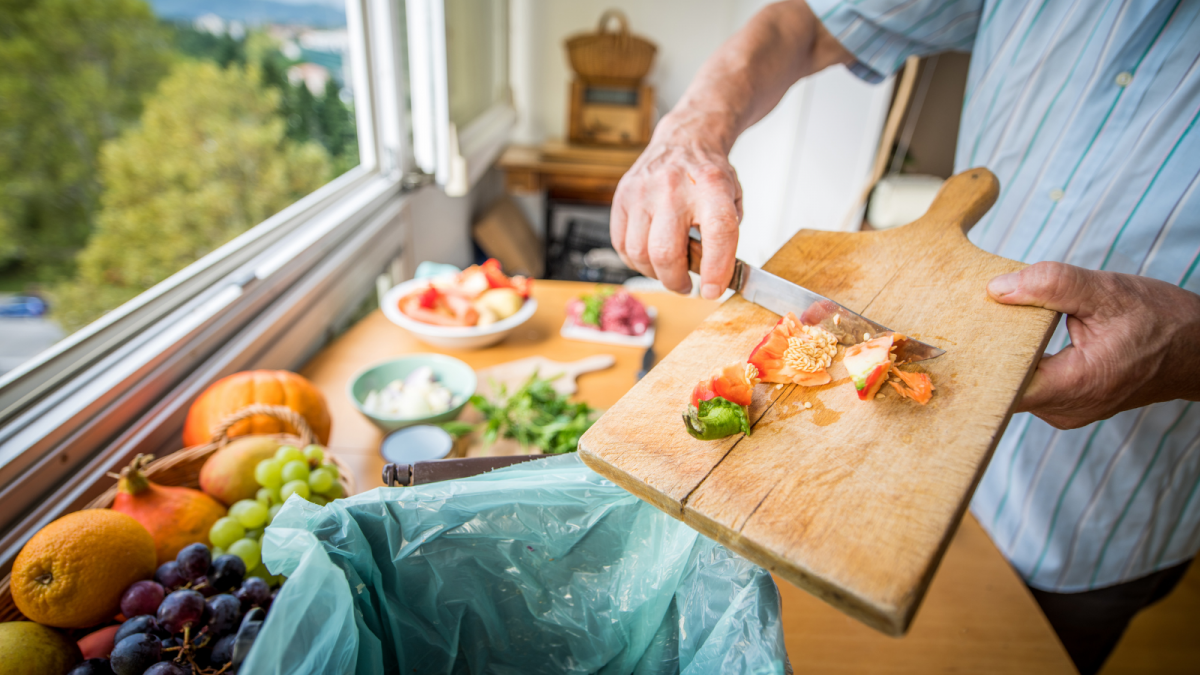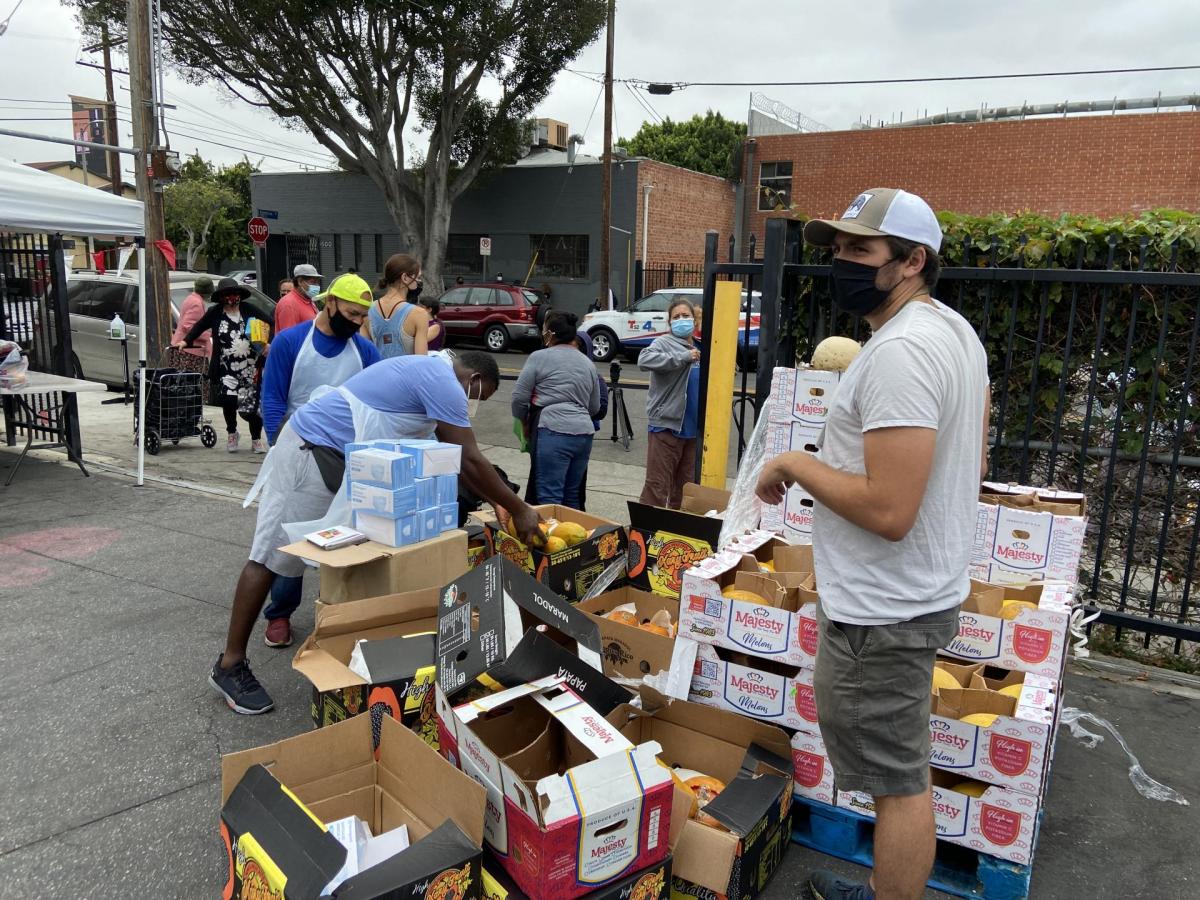Here’s how cities are responding to organic waste recycling regulations — and the resources available to help them
Maria West is the communications director for the California Department of Resources Recycling and Recovery (CalReycle); she can be reached at maria.west@calrecycle.ca.gov.
Just six months into a new law to cut landfill methane emissions, California communities are showing the world how local food rescue and recycling programs can reduce climate pollution and landfilled waste, create jobs, and get surplus food to neighbors in need.
Food, yard, and other organic waste rotting in landfills is a top source of climate super pollutants, particularly methane. To help reduce this methane pollution, California lawmakers passed SB 1383 (Lara, 2016), which calls for a 75% statewide reduction in organic waste disposal by 2025 and a 20% redirection in the amount of food currently thrown away. These requirements took effect on Jan. 1, 2022.
This marks an important step in the state’s strategy to fight climate change. If left unchecked, California’s food waste problem could have devastating consequences. Organic waste makes up about 56% of trash sent to California’s landfills. In 2018 alone, California threw about 39 million tons of waste into landfills. This is equal to over 3 million shipping containers, stacked 32 containers high, along the entire length of Interstate 5 in California.
Additionally, more than 11.2 billion pounds of food waste is thrown into California landfills each year, including 1.8 billion meals worth of fresh, surplus food. In total, 20% of California’s methane pollution comes from food, yard, and other organic waste rotting in landfills.
Diverting organic waste away from landfills is critical because methane is a climate super pollutant that is 84 times more effective at trapping heat in the atmosphere than carbon dioxide over a 20-year time frame. Since it breaks down faster in the atmosphere, reducing this short-lived pollutant is one of the fastest ways we can impact the climate change crisis and realize those benefits within our lifetime.
What does the biggest change to trash in 30 years look like?
Meeting SB 1383’s targets requires the most significant change to our waste and recycling system since California started curbside recycling in the 1980s. Although local governments do not have to meet these statewide methane reduction milestones individually, the law does require local jurisdictions to take actions to help the state achieve these climate targets, including:
- Collecting organic waste like food scraps, yard trimmings, cardboard, and paper and turning them into compost, biofuel, or energy.
- Procuring recycled organic products like compost and biofuel.
- Planning local capacity for new programs.
- Keeping specific records.
- Enforcing local requirements.
- Establishing local food recovery programs to ensure grocery stores and other large, food-generating businesses send unspoiled, surplus food to people without enough to eat.
“Recycling organic waste is one of the fastest and easiest ways we can impact climate change and move California toward a circular economy,” CalRecycle Director Rachel Machi Wagoner said. “When California succeeds in reaching SB 1383’s recycling and food rescue targets, we will have created thousands of local jobs and cut climate pollution equal to taking 3 million cars off the road.”
“We will turn this pollution into valuable new products like biofuel or compost — a superfood for dirt that helps soil retain more water, nourishes more crops, and pulls planet-heating carbon dioxide from the air.”
How are local governments successfully tackling the food waste problem?
Successful local programs are the key to SB 1383’s success. CalRecycle is working with cities, counties, and special waste collection districts to ensure that we reach California’s critical organic waste climate goals together. Getting ready for SB 1383 has been an important change for California, but the state has seen remarkable progress since the requirements took effect earlier this year.
Cities have already launched food scrap collection programs for residents and businesses. For example, the city of La Mirada is among the many communities that launched a three-container collection system in 2022. Residents can now put their food scraps and yard waste into their existing green curbside bin to be collected and processed into compost, mulch, and renewable energy. Residents can request a kitchen caddie to store food scraps between trips to the organics bin or backyard compost pile.
Other communities are adding or expanding facilities to help communities turn their food scraps and yard waste into compost and biofuel. The city of Riverside is among the latest CalRecycle Organics Grant recipients making upgrades to its organics recycling infrastructure. Improvements to Riverside’s Jurupa Valley transfer station and the renovation of an unused digester at its wastewater treatment plant will help turn over 17,000 tons of organic waste into biogas — a mixture of gases that can be used as an energy source. On top of reducing pollution, the upgrades will create at least nine living-wage jobs with benefits.
Another key part of SB 1383 is redirecting fresh food bound for landfills to the one in five Californians without enough to eat. The Yurok Tribe is one of the latest CalRecycle Food Recovery Grant recipients to begin implementing such a program. These funds will help distribute surplus food to hungry tribal members and prevent food waste in Del Norte and Humboldt counties through educational events on food preservation. These efforts include both modern and traditional food preservation methods, such as smokehouses.
Other local governments have also begun passing required local enforcement ordinances. CalRecycle awarded the first round of SB 1383 Local Assistance Grants to 393 communities that passed local rules to comply with California’s unsold food rescue and organics recycling requirements.
- San Diego County will use its funds to boost education to residents and businesses through site inspections, promotional materials, and the purchase of organics and recycling collection bins.
- The Los Angeles area communities of South Gate, Lakewood, Paramount, and Lynwood now have funds to provide organics collection containers to city facilities and countertop kitchen waste bins to residents. Jurisdictions will also procure and provide mulch or compost to residents, businesses, schools, and parks.
- In Daly City and Colma, funding will support new partnerships to meet procurement targets by using more compost in city greenspaces. The cities will also create new educational campaigns to decrease food and yard waste contamination to improve compost quality.
- In many East and South Bay jurisdictions, agencies plan to use the funding to procure and distribute compost or mulch on local landscapes. Some are also implementing education and outreach programs or creating surplus food distribution programs that target underserved communities.
Jurisdictions are sharing their implementation success stories at CalRecycle webinars and workshops, but the path to full compliance will look different in each city, county, or special district.
CalRecycle will also continue to provide extensive technical assistance, tools, and guidance to jurisdictions to help implement their programs. This support includes:
- Model agreements, policies, and ordinances.
- Model signage and brochures in nine different languages.
- Software calculators and capacity planning tools.
- Training videos on collection and edible food recovery compliance.
- Education and outreach tools for various media platforms.
- Presentations to local leadership.
Information sharing will be a valuable tool for all jurisdictions gearing up to meet SB 1383 reporting, procurement, enforcement, and record-keeping requirements. To learn how other communities are meeting these requirements, local officials can sign up for CalRecycle’s SLCP Listserv for information about upcoming webinars and training, where local success stories are routinely shared.
Ideas for future webinars and tools can be emailed to SLCP.Organics@calrecycle.ca.gov.
Compliance assistance
Since SB 1383 passed in 2016, CalRecycle has worked with cities and counties to shape regulations that provide various paths to compliance. This includes a waiver and exemption process for rural, low population, and high elevation jurisdictions.
In 2021, lawmakers passed SB 619 (Laird), giving local jurisdictions the chance to submit a notification of intent to comply. This gave local jurisdictions additional time to implement SB 1383 without facing penalties in 2022 if certain conditions were met. Using this process, 129 jurisdictions submitted a notification to CalRecycle by the required date.
CalRecycle has approved 124 notifications so far. These notifications detailed how COVID-19 impacted local SB 1383 implementation progress and identified roadblocks to success, like a lack of trucks and organic waste containers. CalRecycle is awaiting additional information from the remaining jurisdictions.
Moving forward, CalRecycle’s newly established Jurisdiction and Agency Compliance and Enforcement Branch will work with these jurisdictions to develop action plans, which include specific tasks and timelines to correct identified violations and report progress through regular check-ins.
CalRecycle is also following ongoing discussions concerning additional grant funding. Last year’s budget included $195 million in funding for local organics recycling and food recovery grants, including $60 million to assist with local SB 1383 compliance.
Lawmakers proposed an additional $180 million in SB 1383 local assistance grant funding in the 2022-23 State Budget, which Gov. Gavin Newsom signed at the end of June. This funding would help local governments implement collection, education, outreach, edible food recovery, procurement activities, and capacity planning.
Turning trash into California’s next boom industry
California is an environmental leader and an industry innovator. We model ways to make a healthier, safer future for the rest of the world. In addition to the climate benefits, successful implementation of SB 1383 can fast-track California’s move to a fully circular economy by cutting organic waste, feeding people in need, and turning what used to be trash into valuable new products like compost and biofuel.
California cities are CalRecycle’s valued partners, and we will work together to innovate our way to a circular economy with less waste and pollution, better health, and more jobs. Working together, we can fight the climate crisis while rebuilding a cleaner state.






